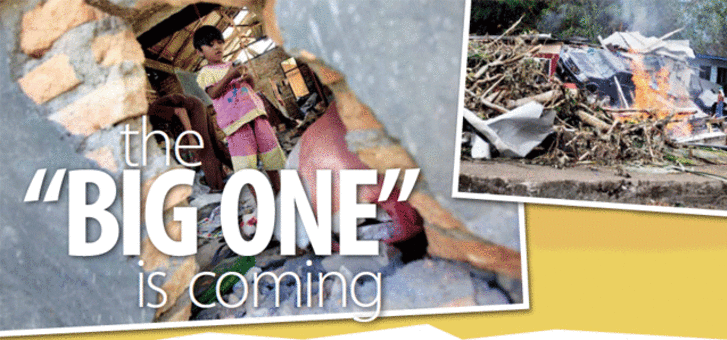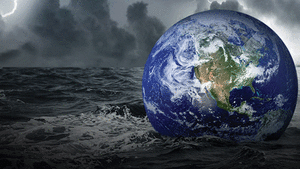On December 26, 2004, a powerful earthquake struck the island of Sumatra, Indonesia. Registering 9.2 on the Richter scale, it was the second-largest earthquake ever recorded on a seismograph.
This earthquake generated a tsunami with waves up to 30 metres high, which killed nearly 230,000 people in 11 countries around the Indian Ocean. This was followed by an 8.7-magnitude quake, occurring further south at Nias (an island off the west coast of Sumatra) on March 28, 2005. On March 6, 2007, two earthquakes struck within two hours of each other off the coast of Sumatra. On September 29, 2009, a powerful earthquake struck the South Pacific. At least 190 people died in Samoa, Western Samoa and Tonga when the tsunami the earthquake generated swept ashore. The very next day, September 30, a 7.6-magnitude earthquake struck Padang on the island of Sumatra, Indonesia. It flattened the city.
Nearly 280,000 homes were damaged or destroyed, and the death toll was in excess of 1300. Another 1200 were severely injured.
Why all of these recent earthquakes in the western Pacific region? Seismologists tell us that pressure along the interface of the Indo-Australian and Eurasian plates has been building for the past 200 years, and recently it has greatly increased. Research suggests that a “big one” is still to come and when it hits, it will likely be accompanied by a large tsunami. It will be even more devastating than the one that caused havoc in countries bordering the Indian Ocean on December 26, 2004.
what’s going on?
Is the incidence of earthquakes increasing?
Or are we just noticing them more as a result of better instrumentation and detection?
Do they seem more severe, in that the death toll left in their wake is higher? Or is that merely due to an increased and more widely spread urbanised population, living in situations likely to be more severely impacted?
It is sobering to realise how many people’s lives have been lost over the past century.
But are increasing numbers of people dying due to earthquakes?
Again, the answer is influenced by the amount of information available.
According to records of the past 300 years, about 18,000 to 20,000 people die annually due to earthquakes. Numbers have risen as massively-increased populations occupy ever more congested, quake-prone urban areas such as Indonesia, Mexico and the west coast of the United States.
It is obviously true that earthquakes are not a phenomenon of the 20th and 21st centuries alone. What earthquake lists do reveal is that these natural disasters are occurring in place after place right around the globe, and they are injuring and killing more people because of our growing global population.
This brings to mind a conversation that took place about 2000 years ago between Jesus and His disciples. They said, “ ‘What will be the sign of your coming, and of the end of the age?’ “ (Matthew 24:3).
Jesus replied, “ ‘There will be famines and earthquakes in various places’ ” (verse 7). He concluded by warning them that this and similar signs marked the beginning of the time of the world’s end (verse 8).
The most powerful earthquake during the 20th century registered a magnitude of 9.5 when it hit Chile on Quake depth, Km May 22, 1960, killing an estimated 5700 people. The second largest—and the largest in North America—was the Alaska earthquake on March 27, 1964, which had a magnitude of 9.2.
what the Bible says
As a student of the Bible, I find it interesting to read what Scripture says about earthquakes. Where mentioned, they are usually related to manifestations of divine power. For example, the Old Testament prophet Isaiah warned a disobedient Israel: “ ‘You will be punished by the Lord of hosts / With thunder and earthquake and great noise, / With storm and tempest / And the flame of devouring fire’ ” (Isaiah 29:6, NKJV).* The prophet presents what we would call natural disasters as God’s judgments against Israel.
According to the Book of Revelation, an earthquake will precede the sounding of the seven trumpets, the heralding of divine judgment upon all humankind: “Then the angel took the censer, filled it with fire from the altar, and threw it to the earth. And there were noises, thunderings, lightnings, and an earthquake” (Revelation 8:5, NKJV).
Finally, a great earthquake unlike any experienced before will mark the second coming of Christ, resulting in the judgment of those who have rejected God.
This is not to say that every earthquake we experience represents some form of divine punishment for our evil ways. Yet even these may cause us to think about the way we live. It is a characteristic of our human thinking that we pay less heed to our lifestyle when times are good. We don’t worry about our health until we’re hit with a serious illness. We don’t pay attention to our spendthrift ways until a calamity strikes that destroys much of what we own. And by then, it is often too late to do anything about it. Disasters such as cyclones, volcanic eruptions and earthquakes make us stop and think. They challenge the complacent, self-centred person who never gives God much thought. Such disasters reveal humankind’s helplessness and mortality. John Wesley once wrote to a friend that “there is no divine visitation which is likely to have so general an influence upon sinners as an earthquake.”
Jesus told us that earthquakes are a sign of the beginning of the world’s last days. When we see them taking place “in various places,” they should cause us to reflect upon the most important issue in life—our salvation. Jesus understood that many would tend to forget or ignore His messages about the future. So because He loves us, He allows calamity to fall on us in order to focus our attention on things of eternal worth.
* Scriptures quoted from NKJV are from The New K ing James Version, copyright






